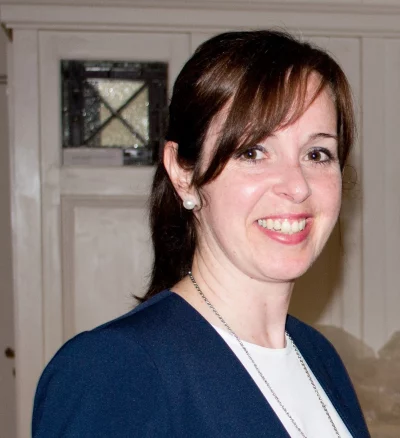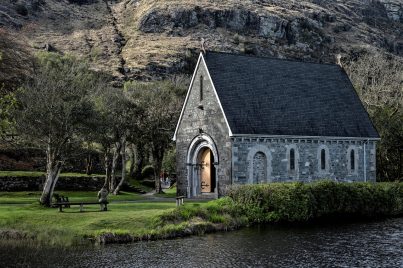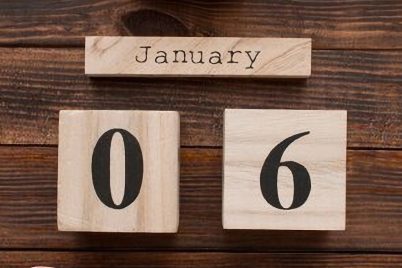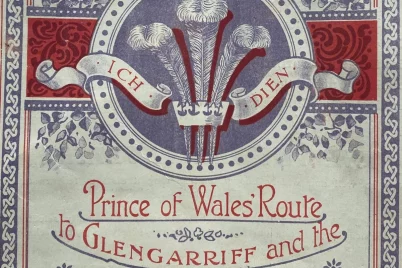In June 1963 President John F. Kennedy visited Ireland. At City Hall Cork, to rapturous applause he delivered a speech. Among those gathered were his entourage, staffers together with their Irish relatives, friends and invited guests and dignitaries. On that momentous occasion, one of the main points Kennedy’s speech centred on was “Ireland’s Greatest Export” which he claimed, “was her people”. But not just her people were the greatest export to the USA and elsewhere, along with the people of the diaspora went the customs and rituals of life in Ireland. What does Hallowe’en mean to you? Trick or Treaters knocking on doors, horror films- recently released for the scary cinematic experience, real pumpkin or artificial one with battery lights, decorations, apple bobbing or remembering the ancestors in religious services. Is Hallowe’en actually an Irish Export? Where did Hallowe’en originate? Let’s explore some spooky history, customs and rituals and watch out for the Púca (ghost).
Halloween or Hallowe’en – according to the Cambridge Dictionary may be spelled either way. It also outlines a brief definition that doesn’t really convey the full meaning of Hallowe’en. It doesn’t hint at the traditions, or the fact that it is a Celtic – Pagan custom – it simply says- the night of the 31 October when children dress in special clothes and people try to frighten each other. Is that it? surely there is more…….. let’s dig deeper into some Irish mysterious goings on.
“Hallowe’en -the word ” & “Hallowe’en-the tradition”
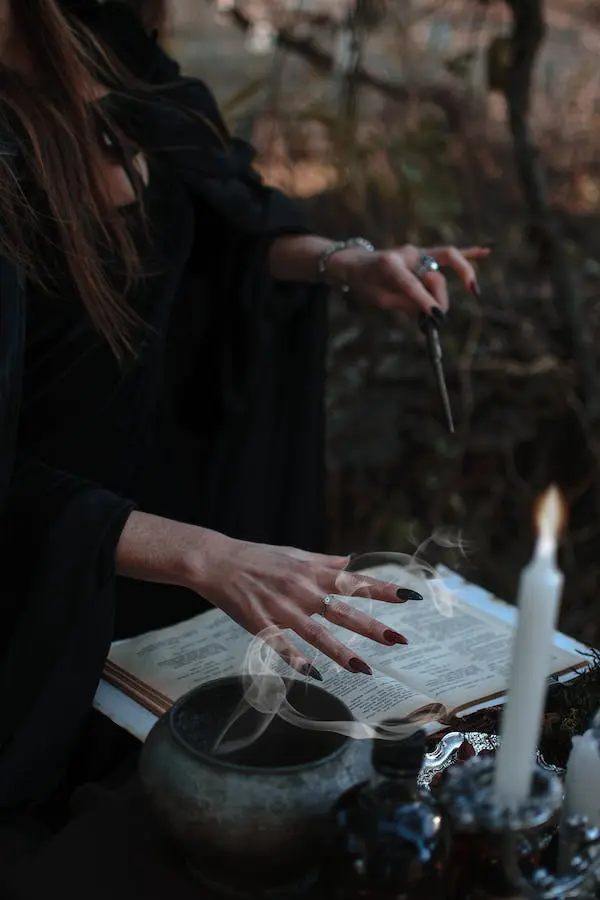
Hallowe’en (abbreviated to reference Hallows Eve or Hallows Evening). The Christian origins of the word Hallowe’en are as follows. Hallowe’en, grammatical contraction of All Hallows’ Eve, a holiday observed on October 31, the evening before All Saints’ (or All Hallows’) Day. The celebration marks the day before the Western Christian feast of All Saints and initiates the season of All Hallowtide, which lasts three days and concludes with All Souls’ Day. This is where the current term “Hallowe’en” is derived. However, customs and rituals, costumes and the concept of scaring people are embedded in a different culture, the Celtic Pagan Festival of Samhain. An Irish Festival celebrated in Irish households for centuries. The ancient Celts of Ireland, Wales and northern France celebrated their version of Samhain. Technically, this represented the commencement of the Winter proper on November 1st. A time when harvest was gathered and people settled down into the period of darkness, reduced sunlight and marking the end of the pastoral agricultural season. Samhain marked the beginning of the Celtic New Year on November 1st. Samhain began the night before on October 31, Oíche Shamhna. The ancients believed this time of the year was perceived as being particularly supernatural when the veil between the living and the dead was very thin. A time when the ancestors and spirits of the deceased might return to their homesteads. With the days shortening and the darkness lengthening is it easy to understand how this Pagan tradition was linked to natural occurrences. Paganism in Ireland was inextricably linked to the seasonal changes and natural phenomena. In Celtic times this was about halfway between the autumnal equinox and the winter solstice. It was one of the four Gaelic Seasonal Festivals- Imbolc, Bealtaine, Lughnasa and Samhain. With its Celtic Pagan origins, some Neolithic Passage Tombs were aligned with sunrise time of Samhain. It was also associated with bonfires, gatherings around burial mounds and feasting. Hallowe’en as we know it today is a hybrid of the Christian and Pagan traditions. It has become an ever-increasing celebration over the last decade. I have heard many say, Hallowe’en has become a big event “like in America”. I often point out that we are not following the Americans as regards Hallowe’en. A combination of Irish Pagan and Christian traditions meant that along with our emigrants we exported Hallowe’en to America. With the Irish Diaspora also went our customs, traditions, rituals, folk magic and piseogs. And so began Hallowe’en as it is now in America. I wonder how many Americans realise Hallowe’en’s true origin to be Irish. So as JFK said “Ireland’s greatest export is her people” – so Hallowe’en also became one of our exports along the way!
Shape Changing Creatures
With Púcas, goblins, faeries, banshees, and evil spirits all part of the Irish folklore and traditions, let’s take a look at a few Hallowe’en customs. Some may make you scream- others not so scary! Fear of abduction by these ghostly creatures had permeated folklore through the centuries. Many creatures supposedly changed shapes. It’s easy to imagine how as little children, we may have checked under the bed for fear these animal-shape changing creatures were loitering there. The Púca ghost was one who shaped changed, being a bull, a goat or a goblin like monster who supposedly had the “intelligence of a man and all the malice of a demon”. (J. Mooney, 1889). The idea of disguise was a reaction so the Púca wouldn’t get you. It created a way for us to attempt to trick the Púca. Disguise was a protective measure. Rural Ireland was full of superstition and religious practices. One particular book, I recommend is Irish Customs and Rituals by Marion McGarry, an easy accessible read, packed with information, old customs and rituals.
The Pumpkin Lantern– its Irish Origins!
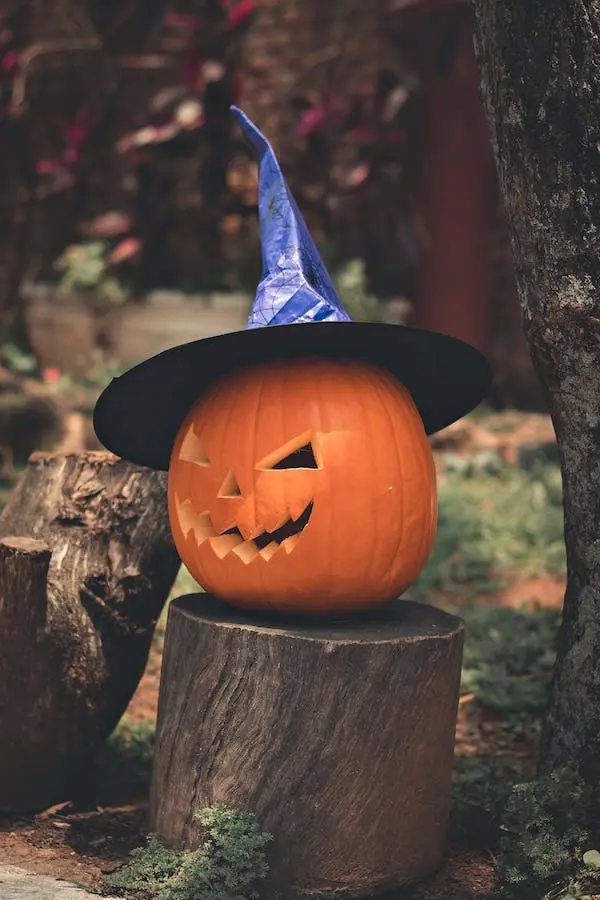
In Ireland, Pumpkins were a rarity. Many presume the lighted pumpkin at the doorway was an American invention- associating the pumpkin as an American tradition. The original “pumpkin” was a good old-fashioned large Irish turnip! The Irish invented the Jack O’ Lantern phenomena, brought the myth to the USA and soon discovered the pumpkin, a native fruit made the perfect Jack O’ Lantern. However, the Irish turnip was a more head-sized vegetable, more rugged in features and could resemble Jack’s head better.
The Legend that was Jack!
A chiselled-out turnip glowed with a candle, or a burning coal ember. Carved with a creepy face, the spookier the better, glowing in windows, doorways and entrance gates. It was intended to scare away evil spirits. The turnip lantern is supposedly originated from “a myth about Stingy Jack” who “convinced the Devil to turn himself into a coin. Jack trapped the Devil by keeping the coin in his pocket next to a cross. When Jack freed him, it was under the condition that he would not claim Jack’s soul after death. When Jack died neither God nor the Devil would take his soul and was condemned to walk the earth forever carrying a burning coal in a turnip lantern to light the way.” (from Irish Customs and Rituals). In West Cork as a child, I heard this story and was given a solution to a chance Stingy Jack encounter. An old lady in West Cork in the 1980s told me how many a time she saw Jack , often wandering the fields at night and especially on a full moon, and no matter when you saw him, moonlight or otherwise, the best course of action was to —— “don’t follow the light as one might do BUT turn your coat inside out and let the lining reflect the light of the turnip or the moonlight back towards Jack and walk the other way” …. Thereby sort of dazzling Jack! I think this seems to be a plausible enough solution to a scary Jack encounter! Dazzled by his own light or moonlight!
The Báirín Breac (Barmbrack)
An Irish traditional sweetbread, speckled with raisins, sultanas and spices was a staple of the Hallowe’en diet. Breac in Irish means speckled. A speckled loaf with hidden supernatural powers of predicting the future. Concealed in the cooking process, were a rag, a coin, a ring a bean. If you have the misfortune of locating the rag or piece of fabric in a slice of the brack- then poverty may lurk around the corner, but at least it is only in a one in three or four chance (depending on how many items were included and how many slices the breac served). The other items represented love or wealth.
Hallowe’en Draíocht (Magic)
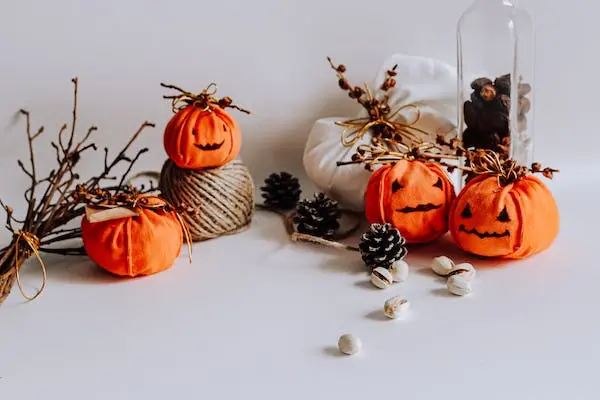
With the belief that the veil between the world of the living and the dead was thin at Hallowe’en and that a portal opened to the “underworld” at this time – spells and magic, the draíocht of the druid gained a foothold in ancient Irish customs. Spells with herbs and native plants were conducted to ward off evil spirits or to create more “malevolent deeds”. As the suspicion that the spirits of the ancestors would visit at Hallowe’en gained momentum together with the Christian tradition of remembering the deceased and saints at this time, it is easy to see how the following tradition unfolded. On Hallowe’en night -a family retiring for the night, would position chairs by the fireside, keep the home-fire burning throughout the night and arrange some food for the returning spirits. A sort of welcome home for the returning souls of the ancestors, while being careful not to aggravate them!
Hallowe’en – a time for predicting the future.
Divination, sorcery was frowned upon by the religious, yet Hallowe’en in Ireland somehow married the pagan and Christian traditions. Divination and guessing one’s fortune was an event that occurred in many a house at Samhain/ Hallowe’en. One involved using saucers (pun on sorcery) with different substances placed on saucers and each family member blindfolded would take turns to choose a saucer, the layout being moved around when the blindfold was positioned. Selecting a saucer with salt hinted at wealth and prosperity. (Note salt is often used for warding off evil spirits and negativity), selecting water suggested an imminent sea voyage, choosing a ring on a saucer- marriage and if one chose a saucer with soil …..well ……. death was on the plate.
Interestingly, according to Irish Customs and Rituals, snails were also a good predictor of the initial of the name of a future husband or wife. Ash or flour was sprinkled on the ground and the pattern of a snail’s slime track would resemble the first letter of the name of the future spouse.
Oweynagat Cave
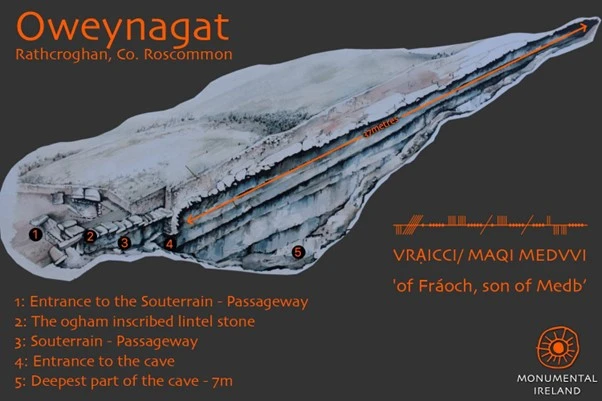
One of the spookiest, places to visit in Ireland at Hallowe’en is Oweynagat Cave. International film crews, (such as CBS, USA) visited the cave to descend into an underworld. An underworld – perceived by many as the birthplace of Samhain & Hallowe’en- an association with the world of the dead! (see the links to the CBS & RTE news items below). In County Roscommon – Oweynagat Cave is steeped in legend and folklore. Its colourful past comes into its own at Hallowe’en, as local lore claims, “the mysterious underworld” and wafts of sulphur fills the air inside the cave to further enhance the underworld experience. Known locally as the Cave of Cats and the Morrigan, goddess of crows and ravens, (another Hallowe’en connection). Hidden along the side of a small county cul-de-sac in Co. Roscommon is a stone lined underground structure called a souterrain, constructed between the 7th and 12th centuries. It has connotations with Hell and the Otherworld, possibly Tír na nÓg. Built above a natural cave and was once known as “Ireland’s gate to Hell”, which would open during the festival of Samhain. There are two Ogham stones located at crossing points with the souterrain. One stone reads ‘VRẠICCI/ MAQI MEDVVI’ or [The Stone] ‘of Fróech, son of Medb’, evoking associations with Queen Medb, who led the armies of Connacht in the Ulster Cycle tale, Táin Bó Cúailnge (The Cattle Raid of Cooley). (Source -RTE report) The Cave has been the genesis of many a tale. Many refer to it as the origins of Hallowe’en as tales abound of three headed monsters escaping the cave entrance at Hallowe’en, not to mention the wailing of the cats, often said to scream for hours on end. Ogham Stone lentils line the passageway, hinting at another era. Did Hallowe’en originate in Co. Roscommon? Explore the many videos online in relation to Oweynagat for a scary experience.
Exploring Hallowe’en is fascinating. A combination of Irish mysticism, magic, paganism, Christianity and some scared locals provided the ideal recipe for Hallowe’en traditions to find their inception in Ireland. In recent years many on radio are commenting on the increasing commerciality of Hallowe’en over the years, I wonder if people locally and globally actually realise that it really was an Irish thing!
Further reading:
- Marion McGarry, Irish Customs & Rituals, How our ancestors celebrated life and the seasons. (Orpen Press, 2020)
- The Irish cave known as the entrance into hell — and the birthplace of Halloween – CBS News
- Hellmouth – From RTÉ Radio 1’s Almanac of Ireland, Manchán Magan pays a visit to Oweynagat, take a listen to the report
- How Jack O’Lanterns Originated in Irish Myth | HISTORY.COM
